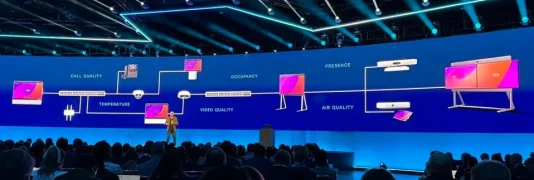When most tech people hear the word “cloud” they think of the apps and data in some massive data center that feeds consumers social media apps like Facebook, YouTube, and Flickr. Ironically, I hear very little about the “personal cloud”. I think the personal cloud in your home could turn out to be as significant as the cloud in the sky. One great example that demonstrates this is an app called Air Video on the iPad. This software allows users to stream video from their home PC or Mac to their iPhone, or
iPad and iPod.
Consumers are generating a tremendous amount of content today with their digital cameras, camcorders and personal
HD palmcorders. They shoot the photo and video and when they get home, load them onto their home personal computer. Loading and playing them back on a Windows 7 PC is very simple and straightforward, regardless of the camera used, quality (bit rate) and format (CODEC and container).
The iPad Personal Video Challenge
Loading, storing and playing back that same personal video on an iPad is an entirely different story, and in my experience, a painful one.
The iPad Personal Video Loading Challenge
First, getting video onto the iPad requires special hardware or special PC software. The special hardware is the iPad
Camera Connector Kit which currently costs $29. It will allow SD cards and “select” USB devices to input video directly into the iPad. Users can also use iTunes to load video onto the iPad, but only those that are in the limited iPad supported video formats.
iPad Video Storage Challenge
The iPad is limited to 16 to 64 GB of memory and that space is not just for video, it’s also for pictures, music, movies, documents, books and iPad applications. For the sake of argument, let’s say that half, or 8 GB to 32 GB can be dedicated to personal video. One hour of 720p video from the Kodak Zi6 occupies about 3.75gb. So in total, you could store approximately 2.2-8.5 hours of video before you run out of iPad storage. That’s not a lot of birthday parties, little league baseball games, or horse shows.
The iPad Personal Video Format Challenge
The final iPad personal video challenge is supported formats. For any device to playback video, it must support the video’s wrapper (i.e. .mov), the video’s codec (i.e. h.264), audio format (i.e. AAC at 160 kHz) and video bit rate (i.e. 8 Mbps). If not, the video won’t play or will likely play erratically. A Windows PC is very flexible in that it will play almost every video’s wrapper, codec and bit rate. In those off cases that it doesn’t run it natively, users can download free software to play it.
The iPad has a very narrow support list according to its
website: it will play
“H.264 video up to 720p, 30 frames per second, Main Profile level 3.1 with AAC-LC audio up to 160 Kbps, 48kHz, stereo audio in .m4v, .mp4, and .mov file formats; MPEG-4 video, up to 2.5 Mbps, 640 by 480 pixels, 30 frames per second, Simple Profile with AAC-LC audio up to 160 Kbps, 48kHz, stereo audio in .m4v, .mp4, and .mov file formats; Motion JPEG (M-JPEG) up to 35 Mbps, 1280 by 720 pixels, 30 frames per second, audio in ulaw, PCM stereo audio in .avi file format” That means it won’t play the MPEG-2 video that comes off most personal video recorders. It won’t play the HD video off my Kodak Zi6 pocket HD camera or HD off of Flip cameras. It won’t play the Microsoft standard, WMV. It won’t play the 3GP video which is used by many smartphones, like my BlackBerry Bold.
One Solution- Batch Convert with CyberLink MediaShow Espresso
One solution is to convert the video using a program like
CyberLink Espresso. I can attest that this package is fast and yields good quality. It is fast in part due to its support for GPU based compute offload for AMD’s recent GPUs thanks to ATI Stream technology. This solves the video format issue, but not the loading and storage challenge.
Another Solution- Convert & Stream with AirVideo
Another solution is to use
AirVideo, which automatically converts video located on your PC and streams to the iPad. It can stream this video over your home WiFi network when you are inside the house. You can stream video from the home PC to the iPad outside the house too. This comes handy when you are away from home. Of course, your home PC must be on and connected to the internet.
Setting up AirVideo
Setting up AirVideo is easy.
Download the PC software, install it, and tell it where you keep your videos. If you don’t know where your videos are, check your PC’s My Videos folder. Setup took me about five minutes. Then go to the App Store on your iPad and buy AirVideo for $2.99.
Using AirVideo
Using AirVideo is straightforward. Open the app on your iPad and select the video you want to play. Then watch it. The quality has been great and there have only been a few videos that I couldn’t watch. The cool part about the interface is that it will show video icons of the files, which helps when you have strange file names that aren’t descriptive.
How it Works
Geeks like me appreciate the benefit of a technology but also appreciate how it works. Basically, AirVideo is converting the video into a format the iPad prefers then streams it out of the PC. It does this “on the fly” which means in near real-time. This is versus “batch mode” with CyberLink Espresso where the user wants to watch later, not immediately. The iPad caches a little bit of the video to ensure smooth playback. I tried this on a PC based on the
AMD Phenom™ II X4 Processor, it took as much as 85% of all four cores to convert many videos “on the fly”.
The Future
I expect the iPad to get more storage in the future, but the videos and the size of those videos will also get larger. Videos won’t all go into the cloud and be streamed either partially due to this data increase. One analyst cites that consumers have an average of 250 GB of storage today and this is expected to grow to grow to 3 TB by 2014. A recent analyst report I read says that data will grow in size 44x from 2009 and that 70% of it is user generated. User generated video in particular is very dense today and will become even more dense as smartphones move to 1080p and as inexpensive personal HD camcorders move to higher HD bit rates for higher quality.
Conclusion
The iPad signaled the beginning of the acceptance of a fourth mainstream device, adding to the PC, smartphone, and TV. This doesn’t mean it’s perfect for all use cases, and as I have illustrated, there are issues with personal video. Personal video loading, storage and playback are a challenge on the iPad. There are solutions though and they require a modern day PC. CyberLink Espresso and Air Video convert the video to the iPad’s supported formats and Air Video will do it on the fly and stream it to your iPad inside and outside the home. As video density and footprint will only rise in the future, I believe it could help make the “personal cloud” in the home as important as the “big cloud”. The technology is actually there today but the industry needs to simplify it for the consumer to make it a mainstream usage model. This could be a good business opportunity for the PC and STB (set top box) ecosystem. Oh and if you think people aren’t interested in this sort of thing, to date Air Video is one of the best selling and highest grossing iPad utility apps.
Patrick founded the firm based on his real-world world technology experiences with the understanding of what he wasn’t getting from analysts and consultants. Ten years later, Patrick is ranked #1 among technology industry analysts in terms of “power” (ARInsights) in “press citations” (Apollo Research). Moorhead is a contributor at Forbes and frequently appears on CNBC. He is a broad-based analyst covering a wide variety of topics including the cloud, enterprise SaaS, collaboration, client computing, and semiconductors. He has 30 years of experience including 15 years of executive experience at high tech companies (NCR, AT&T, Compaq, now HP, and AMD) leading strategy, product management, product marketing, and corporate marketing, including three industry board appointments.






















































































